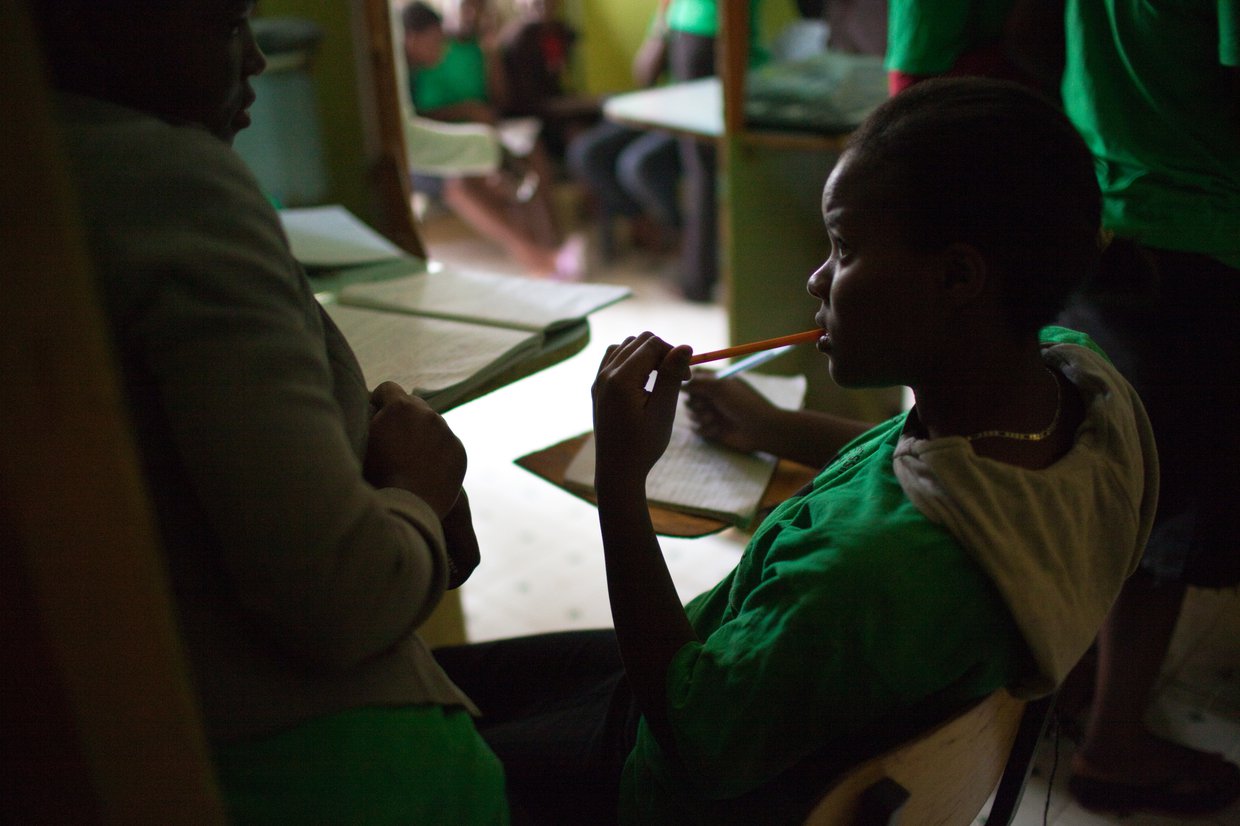
All girls deserve good health and a chance to follow their dreams. Photo: PATH/Eric Becker.
Editor’s note: This is the first post in our blog series Local Brilliance: Women leading global health innovation, featuring scientists and leaders who are saving lives and improving health for women and girls in their countries and communities.
I grew up in a large family in rural Western Kenya with more than 10 siblings and a huge, extended family of cousins, uncles, and aunts whose lives were closely intertwined with mine. Father was a civil servant and my mother taught kindergarten. As a little girl, I often accompanied her to work. I learned early on the value and power of education. Most of my teen years were spent away from home at Christian boarding schools that were strict, orderly, and extremely conservative and guarded. However, when I was in junior high school, two incidents in my village had a profound impact on me.
The first was the rape of my 14-year-old neighbor. I remember people talking about this in hushed tones. No punishment was ever meted out to the perpetrator and an out-of-court settlement was reached; the family got a bull as compensation. As a child I often wondered what relief the bull provided from a traumatic experience that changed her life forever.
The second was the pregnancy of my cousin. The image of this young girl holding onto a baby—a child mother of another child, not understanding that her life would change forever—stayed with me for a long time. A girl in such a situation would drop out of school, maybe get married off to an older man.

Photo: PATH/Eric Becker.
For these two girls, the stigma that comes with sexual assault and with a teenage pregnancy and early motherhood shattered their dreams and aspirations. Growing up it dawned on me just how unprepared most girls are to deal with sexuality and the challenges that women and girls face. No one had given the two girls (or any of us for that matter) the skills or tools that would have helped them deal with the challenges unique to young women. Of course there was always the warning, both at school and at home, to stay away from boys—but little more.
After college I took a job at the Centre for the Study of Adolescence. I worked with young people, especially young girls, designing programs and developing tools that would empower them to make the right decisions, transition into adulthood without fear, and navigate life during an exciting but turbulent period. I soon realized that this was not so easy. Since then, it has been my quest to create policy and the legal framework and environment so girls have a chance to grow up, live their lives, achieve their dreams, and reach their full potential.
Today, I feel hopeful. At PATH we are developing programs that are improving the health and general well-being of women and girls. Programs that target communities and influence decision-makers who can help women and girls lead safe and fulfilling lives, free from harmful practices such as early marriage and female genital mutilation. These are practices that not only limit women, but predispose them to HIV infection, unplanned pregnancies, and other life-threatening situations. What we need to do is reduce their risk of unprotected sex and delay teen pregnancy, keeping girls in school longer and reducing their vulnerability to sexual exploitation.
DREAMS: Determined, resilient, empowered, AIDS-free, mentored, safe

We need to keep girls in school longer and reduce their vulnerability to sexual exploitation. Photo: PATH/Wendy Stone.
One area of work is the DREAMS project, and it’s awakening communities by allowing girls to thrive. In my country, girls are greatly impacted by HIV/AIDS, representing roughly 75 percent of all new adolescent HIV/AIDS cases each year. The result is thousands of young women are sentenced to a lifetime of stigma, discrimination, and health complications associated with this disease.
PATH’s extensive experience and familiarity in the region, along with our on-the-ground partners, help us target at-risk girls to reduce their vulnerability and predisposition to HIV infection. DREAMS’ holistic approach aims to create a safe environment for the girls to attend school, and strengthen their capacity to make good choices so they may thrive. We do this by enhancing access to youth-friendly services (including HIV prevention, care, and treatment) as well as supporting communities and families with sustainable interventions:
- Girls are encouraged to enroll in school to receive a formal education, as well as life and livelihood skills.
- At-risk populations receive increased access to health services and commodities.
- Communities are mobilized to address unhealthy norms that put adolescent girls and young women at risk of sexually transmitted infection and unplanned pregnancies.
- Families receive support and training to bolster their role as the basic unit of protection for vulnerable girls.

“Growing up it dawned on me just how unprepared most girls are to deal with sexuality and the challenges that women and girls face.”—Rosemarie Muganda-Onyando. Photo: PATH/Eric Becker.
For me, education was the key that opened the door to endless opportunities and I believe it would do the same for women irrespective of what kind of childhood one has. Part of my job involves giving girls like my 14-year-old cousin a second chance in life by advocating for policies that ensure that girls who get pregnant while still at school get to return to school and complete their education.
There are still those opposed to sexuality education for girls. Although some of the same challenges that I faced still exist, my satisfaction comes from the knowledge that the dreams and aspirations of all girls, including my own daughter, are now within reach.
